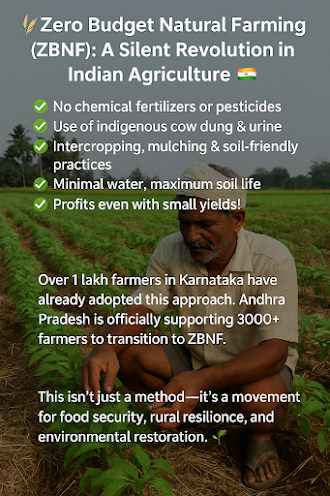Why Indian Wetland Matters?
Indian Wetlands
Nature’s Silent Protectors We Can't Afford to Ignore
Have you ever stood by a quiet lake, watched birds flock over shimmering waters, or walked through a mangrove forest?
Chances are, we’ve experienced the magic of a wetland even if we didn’t know it.
Wetlands are more than just waterlogged lands or bird watching spots. They are nature’s quiet workhorses, performing critical ecological functions without much fanfare. In a country like India with its unique blend of landscapes, climates, and cultures wetlands are nothing short of natural treasures.
Let’s dive into why Indian wetlands deserve a special place in our hearts, minds, and conservation efforts.
What Exactly Are Wetlands?
At their simplest, wetlands are areas where water covers the soil or is present near the surface, either all year or during certain seasons. But there’s nothing simple about their role in nature.
They sit at the interface of land and water, creating a rich habitat for both aquatic and terrestrial life. You’ll find them in the form of:
Inland Wetlands — Lakes, ponds, rivers, marshes, and floodplains (like Wular Lake or Loktak Lake)
Coastal Wetlands — Mangroves, estuaries, lagoons, mudflats (like the Sundarbans and Chilika Lake)
Man-Made Wetlands — Reservoirs, paddy fields, fish ponds, dams (like Harike Wetland in Punjab)
Why Are Wetlands So Important?
If forests are the lungs of the earth, wetlands are its kidneys quietly filtering, cleaning, and balancing life on our planet.
Biodiversity Hotspots
Wetlands are teeming with life. They provide critical breeding, feeding, and resting grounds for thousands of species.
They are essential stopovers for migratory birds, some traveling thousands of kilometers from Siberia, Europe, or Central Asia.
Rare creatures like the Irrawaddy dolphin, Sangai deer, and Royal Bengal Tiger rely on wetland ecosystems.
Natural Water Purifiers
Wetlands trap sediments and absorb pollutants from water, filtering out harmful substances before they reach rivers, lakes, or underground water sources. They act as natural water treatment plants, at no cost to us!
Flood Control & Climate Regulators
During heavy rains or floods, wetlands absorb excess water, preventing disasters in nearby areas.
They recharge groundwater supplies.
They store carbon, helping combat global warming.
Coastal wetlands, especially mangroves, protect shorelines from erosion and storm surges.
Economic and Livelihood Value
Millions of Indians depend on wetlands for:
Fishing and aquaculture
Farming and agriculture (due to fertile wetland soil)
Handicrafts, reed collection, and other resources
Tourism and eco-tourism
Cultural, Spiritual, and Historical Significance
Many wetlands in India hold religious importance and are linked to festivals, pilgrimages, and community rituals.
The Pushkar Lake in Rajasthan is considered sacred.
Wetlands have been centers of ancient settlements and traditional practices.
Iconic Wetlands of India More Than Just Scenic Spots
Sundarbans (West Bengal): Largest mangrove ecosystem, UNESCO site, and tiger reserve.
Chilika Lake (Odisha): Asia’s largest lagoon, famous for migratory birds and dolphins.
Loktak Lake (Manipur): Known for floating phumdis and the endangered Sangai deer.
Wular Lake (Jammu & Kashmir): Crucial for flood control and local fisheries.
Keoladeo National Park (Rajasthan): A birdwatcher’s paradise, also a Ramsar and UNESCO site.
The Growing Threats to India’s Wetlands
Despite their importance, wetlands are under increasing pressure:
Pollution: Industrial effluents, plastic waste, untreated sewage
Urbanization & Encroachment: Illegal construction, landfilling
Overexploitation: Unsustainable fishing, tourism, and resource extraction
Climate Change: Altering rainfall patterns, rising temperatures, sea-level rise.
What’s Being Done to Save Indian Wetlands?
Policy Initiatives
Wetlands (Conservation and Management) Rules, 2017 Aimed at protecting wetlands from degradation.
National Wetland Inventory & Assessment — Mapping and monitoring wetland health across India.
Ramsar Convention & India
India is part of the Ramsar Convention (1971), an international treaty for wetland protection.
As of 2024, India hosts 80 Ramsar Sites — each recognized for its global ecological significance.
Community Participation & NGO Initiatives
Local communities play a vital role in sustainable wetland management.
NGOs and conservation groups work to restore degraded wetlands and promote eco-friendly tourism.
Eco Tourism & Awareness Campaigns
Promoting responsible tourism helps fund conservation while educating visitors about the value of wetlands.
Why Should Every Indian Care?
Wetlands may not make headlines every day, but they are quietly working for us, regulating climate, supporting biodiversity, providing livelihoods, and even protecting our homes from floods.
They’re not wastelands; they’re wonderlands.
Protecting wetlands is a shared responsibility for governments, communities, and individuals alike. Whether you’re a traveler, student, farmer, or city-dweller, your awareness and actions can help safeguard these fragile ecosystems for future generations.
What You Can Do:
> Avoid dumping waste in water bodies.
> Support sustainable tourism and eco-friendly practices.
> Participate in local wetland clean-ups and conservation drives.
> Raise awareness about wetland protection in your community.




Comments
Post a Comment